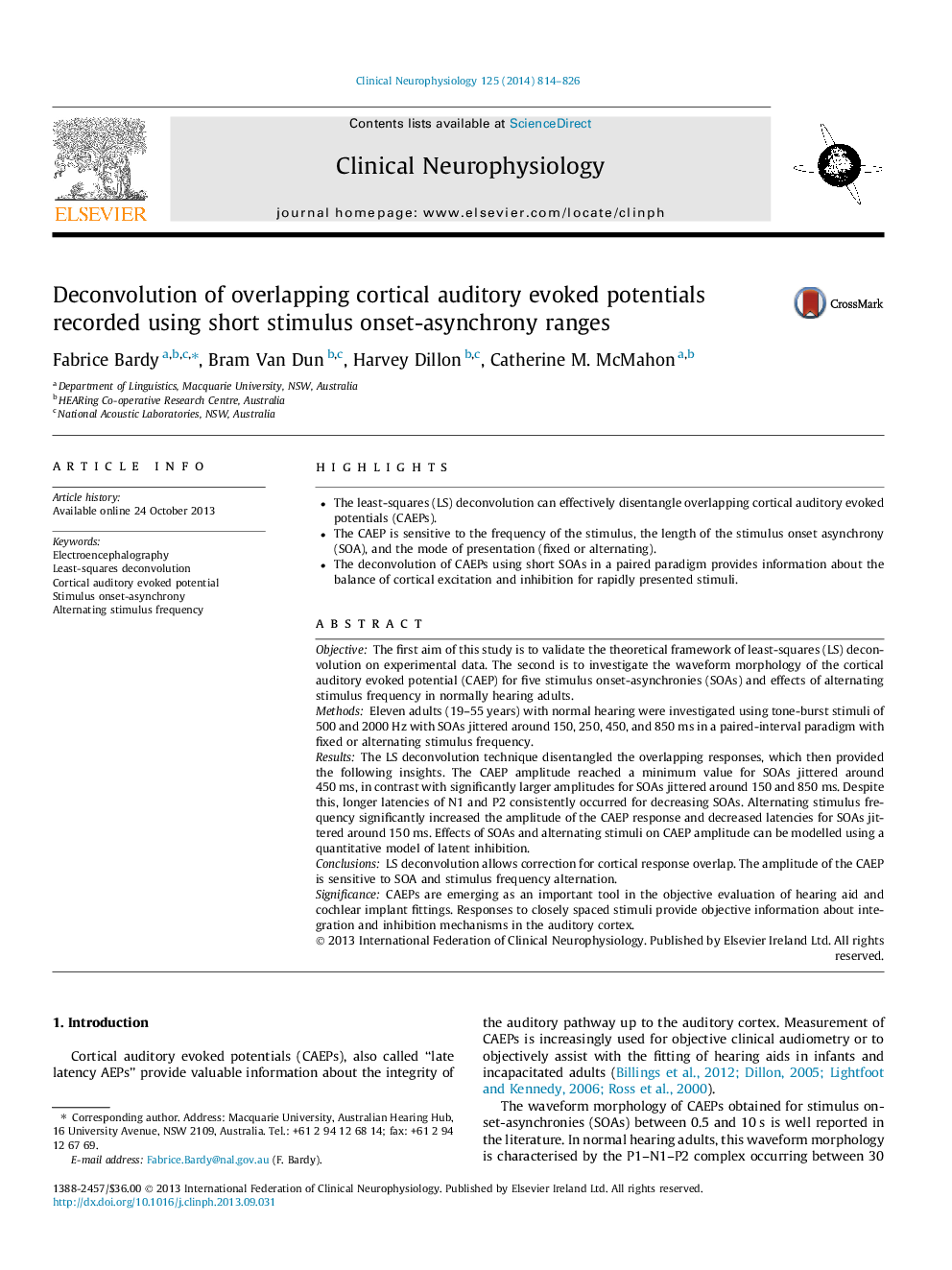| Article ID | Journal | Published Year | Pages | File Type |
|---|---|---|---|---|
| 6008433 | Clinical Neurophysiology | 2014 | 13 Pages |
â¢The least-squares (LS) deconvolution can effectively disentangle overlapping cortical auditory evoked potentials (CAEPs).â¢The CAEP is sensitive to the frequency of the stimulus, the length of the stimulus onset asynchrony (SOA), and the mode of presentation (fixed or alternating).â¢The deconvolution of CAEPs using short SOAs in a paired paradigm provides information about the balance of cortical excitation and inhibition for rapidly presented stimuli.
ObjectiveThe first aim of this study is to validate the theoretical framework of least-squares (LS) deconvolution on experimental data. The second is to investigate the waveform morphology of the cortical auditory evoked potential (CAEP) for five stimulus onset-asynchronies (SOAs) and effects of alternating stimulus frequency in normally hearing adults.MethodsEleven adults (19-55Â years) with normal hearing were investigated using tone-burst stimuli of 500 and 2000Â Hz with SOAs jittered around 150, 250, 450, and 850Â ms in a paired-interval paradigm with fixed or alternating stimulus frequency.ResultsThe LS deconvolution technique disentangled the overlapping responses, which then provided the following insights. The CAEP amplitude reached a minimum value for SOAs jittered around 450Â ms, in contrast with significantly larger amplitudes for SOAs jittered around 150 and 850Â ms. Despite this, longer latencies of N1 and P2 consistently occurred for decreasing SOAs. Alternating stimulus frequency significantly increased the amplitude of the CAEP response and decreased latencies for SOAs jittered around 150Â ms. Effects of SOAs and alternating stimuli on CAEP amplitude can be modelled using a quantitative model of latent inhibition.ConclusionsLS deconvolution allows correction for cortical response overlap. The amplitude of the CAEP is sensitive to SOA and stimulus frequency alternation.SignificanceCAEPs are emerging as an important tool in the objective evaluation of hearing aid and cochlear implant fittings. Responses to closely spaced stimuli provide objective information about integration and inhibition mechanisms in the auditory cortex.
